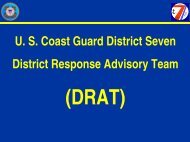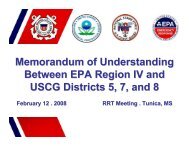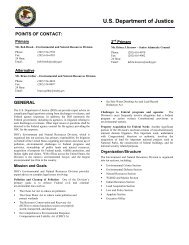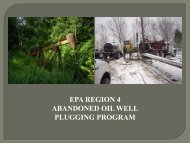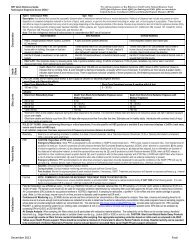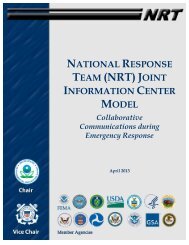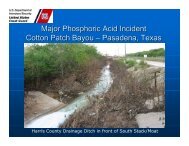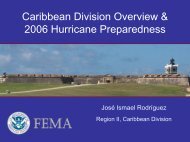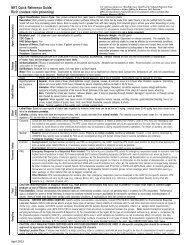Sea TurtlesSea turtles can be exposed to spilled oil when feeding, surfacing to breath, or nesting in areas contaminated bystranded oil. Turtles are also susceptible to floating tarballs formed from weathered oil. There is no firm evidencethat sea turtles are able to detect and avoid oil (Odell and MacMurray, 1986). Studies indicate oil exposure can haveseveral adverse effects on turtles, including toxic responses to vapor inhalation or ingestion, skin irritation,interference with osmoregulation and ion balance, and reduced hatching success (Van Fleet and Pauly, 1987; Frittsand McGehee, 1982; Lutz and Lutcavage, 1989). Experiments on adult loggerhead turtles conducted by Lutcavageet al. (1993) showed that major body systems in marine turtles are adversely affected by even short exposures toweathered South Louisiana crude oil. Effects observed included alteration of blood chemistry, alteration ofrespiration and diving patterns, interference with salt gland function, and skin lesions. Exposure to fresh oil wouldlikely be considerably more harmful. Though oil exposure may not directly kill adult turtles, the effects may makethem more vulnerable to predation or disease.Oiling of sea turtle nesting habitat poses a potential risk to adult nesting turtles, hatchlings, and to eggs. Turtleembryos are particularly sensitive. The effects of oil on the development and survival of marine turtles appears to bevariable, depending on such factors as stage of nesting, oil type, degree of weathering, and amount and height of oildeposition on the beach. Studies by Fritts and McGehee (1982) indicate that fresh oil washing ashore to the levelwhere nests with incubating eggs are located may result in extensive embryo mortality. The studies found thatmortality may not be significant if eggs are deposited in sand after contamination has occurred and the oil hasweathered, although hatchlings may be smaller than normal. Some evidence suggests olfactory cues are imprintedon sea turtles as hatchlings and guide them back to their natal beaches for nesting when they reach maturity. Oil onthe beach could interfere with these chemical guides (Lutz et al., 1985). <strong>Response</strong> activities to clean oil stranded onbeaches may pose an additional risk of injury to eggs, hatchlings, and nesting adults.ManateesLittle information is available regarding the effects of oil on manatees. In that manatees surface to breath and tend torest at or just below the surface of the water, they are at risk of direct exposure to oil on the water surface. Toxicvapors and contact could cause irritation of the mucous membranes of the eyes and airways, possibly leading to lungcongestion or even pneumonia (St. Aubin and Lounsbury, 1990). The volatile fraction of crude oil (approximatelyone-third by volume) contains many toxic hydrocarbons which evaporate and can create hazardous airconcentrations near the spill (Allen and Ferek, 1993). Ingestion of tar balls or plant material contaminated with freshoil could result in absorption of toxic hydrocarbon fractions during the long retention time in the gut of thisherbivore. Because their skin is thick and underlain by a thick layer of blubber, direct exposure to oil wouldprobably not cause significant effects on thermoregulation (St. Aubin and Lounsbury, 1990). The aggregation ofmanatees into small, restricted habitats, particularly during winter, makes them susceptible to catastrophic losses.This scenario is more likely to be associated with coastal accidents than with offshore transportation of oil.BirdsBirds exposed to oil can suffer serious adverse physical and chemical effects. Feathers absorb oil, interfering withcritical functions such as insulation, water-repellency, buoyancy, and flight. Death can result from combinations ofhypothermia, starvation, and drowning. Birds may also suffer toxic effects from inhalation of petroleum vapors oringestion of oil while preening or from eating contaminated food. Ingested oil can cause anemia, pneumonia,intestinal irritation, kidney damage, altered blood chemistry and osmoregulation, decreased growth, and decreasedproduction and viability of eggs (Fritts et al., 1983). Oil contamination on egg shells, even in very small quantities,is extremely toxic to avian embryos.Bird species differ in their vulnerability to oil spill impacts depending on their behavior, distribution, andreproduction. Marine species adapted to life on the open ocean are particularly susceptible to direct exposure.Diving coastal seabirds, including the roseate tern, are at high risk of oil exposure because they regularly enter thewater for feeding. Shorebirds, wading birds, raptors and passerines are less susceptible to exposure to free-floatingoil because they rarely immerse themselves in water and do not raft or rest on the water surface. They are, however,at risk of contamination from oil that washes ashore. Shoreline oiling can severely impact shorebirds, wading birds,and other species that use beach habitat for nesting or foraging, as do piping plovers. Especially vulnerable are
seabird species that assemble regularly or seasonally such as roseate terns, which form large nesting and stagingaggregations. Some species, such as raptors, can be impacted indirectly if their primary food sources are affected.Dispersant use can reduce the risk of these impacts by reducing the amount of oil washing ashore and remainingafloat at sea with potential to contaminate seabirds.Analysis of Biological Effects of Proposed ActionA primary objective of an oil spill response is to quickly remove as much oil as possible from the surface of thewater, thereby minimizing direct contact with wildlife and preventing movement of the oil into nearshore andshoreline areas where removal is more difficult and environmental impacts severe. Dispersants, applied underappropriate conditions, may offer the best response option to help achieve this objective. Dispersion of oil at sea,before a slick washes ashore, reduces the overall and particularly the chronic impacts of oil on sensitive inshorehabitats including salt marshes, coral reefs, sea grasses, and mangroves. Dispersed oil is less likely than a surfaceslick to reach shoreline areas. Any dispersed oil that does move inshore is less likely to stick to shorelines andvegetation because dispersants alter the adhering property of oil droplets. Consequently, habitats recover faster ifthe oil is dispersed before it reaches them (NRC, 1989). By protecting nearshore and shoreline habitats fromcontamination, dispersant use benefits listed species and other wildlife that rely on them for nesting, feeding, orresting. This would include the listed species that nest along Caribbean shorelines such as the roseate tern, brownpelican, leatherback sea turtle, and Atlantic green sea turtles.Some of the listed species in the Caribbean Region, such as most sea turtle species and brown pelicans, occur or feedpredominantly in shallower, nearshore waters rather than in the area where dispersant use will be pre-authorized bythe Letters of Agreement and so are not likely to be adversely affected. Dispersant application would benefit theseand other listed species by preventing contamination of shoreline and nearshore habitat and, concomitantly, theimpacts associated with shoreline cleanup activity. Brown pelicans, for example, are known to be highly sensitive tohuman disturbance, especially when nesting. The primary human-related cause of mortality to manatees is collisionwith watercraft. Such potential nearshore impacts from cleanup activities would be minimized by preventing oilfrom stranding ashore.Potential effects of dispersant use on listed species that may occur more frequently in the open waters pre-authorizedfor dispersant use, are considered below. In some cases, the species are present in the pre-authorized area seasonallyrather than year-round, reducing the risk they would be affected.Direct Contact and IngestionBy removing the surface oil slick, dispersants reduce the risk of direct contact with wildlife that dwell at or passthrough the water surface to feed or breath such as sea birds, sea turtles, sirenians, and cetaceans. Diving sea birdssuch as the brown pelican and roseate tern are particularly vulnerable to surface slicks. Chemically dispersed oildroplets are less sticky and therefore less likely to adhere to feathers, skin, or other body surfaces than undispersedor naturally dispersed oil (Neff, 1990). Juvenile sea turtles, which often are found with drifting sargassum mats inconvergence areas further from shore, would particularly benefit from reduced surface exposure in the area underconsideration. Exposure of sea turtles to tar balls, which they are known to ingest and which also may adhere tojuveniles, would be reduced because dispersants help prevent tarball formation. Sea turtles and manatees inoffshore areas may temporarily experience exposure to higher concentrations of oil droplets in the water column,primarily in the upper few meters, following dispersion. In open waters with continuous mixing and dilutioncapabilities, however, dispersed oil is rapidly diluted. Considering that concentrations fall to background levelswithin the first few hours following dispersion, exposure will be short-term and concentrations low.Prey ContaminationIf zooplankton, fish, and other water column or benthic organisms become oiled or accumulate oil in their tissues,they could ultimately expose species that prey upon them. Diving seabirds and several sea turtle species that occurin the area under consideration prey on fish and aquatic invertebrates. Prey species that occur in open waters furtherfrom shore where dispersant use will be pre-authorized are the primary concern. Prey species that occur in nearshoreareas where dispersant use will not be pre-authorized by the Letters of Agreement are unlikely to be impacted.
- Page 2 and 3: UPDATES AND CHANGESCHANGE OR UPDATE
- Page 6 and 7: CARIBBEAN REGIONAL RESPONSE TEAMPOL
- Page 9 and 10: SECTION IPurposeThis policy provide
- Page 11 and 12: 2. YELLOW ZONE - WATERS REQUIRING C
- Page 13 and 14: SECTION IIIProtocolsTHE FOLLOWING R
- Page 15 and 16: APPENDICES
- Page 17 and 18: Caribbean Regional Response TeamDis
- Page 19 and 20: Caribbean Regional Response TeamDis
- Page 21 and 22: Caribbean Regional Response TeamDis
- Page 23 and 24: Caribbean Regional Response TeamDis
- Page 25 and 26: Caribbean Regional Response TeamDis
- Page 27: Caribbean Regional Response TeamDis
- Page 30 and 31: Caribbean Regional Response TeamDis
- Page 32 and 33: CommanderSeventh Coast Guard Distri
- Page 34 and 35: mile from any reef which is less th
- Page 36 and 37: high exposure levels, volatile hydr
- Page 38 and 39: a few days or weeks, unmetabolized
- Page 40 and 41: 1990. Geraci, J.R. and D. J. St. Au
- Page 42 and 43: CommanderSeventh Coast Guard Distri
- Page 44 and 45: Biological Assessment of Effects on
- Page 46 and 47: The dispersed oil droplets, ranging
- Page 50 and 51: Most aquatic organisms have the abi
- Page 52 and 53: Ernst, C.H., J. Lovich, and R.W. Ba
- Page 54 and 55: Appendix IIIDispersant Use Monitori
- Page 56 and 57: Dispersant Use Monitoring Program w
- Page 58 and 59: APPENDIX IVDispersant Use Decision
- Page 60 and 61: - dispersant composition;- water sa
- Page 62 and 63: For Puerto Rico:1) the waters are n
- Page 64 and 65: DOCUMENTATION/APPLICATION FORM FORD
- Page 66 and 67: 2. Type of aircraft used __________
- Page 68 and 69: Letter of AgreementCommonwealth of
- Page 70 and 71: 300. SCOPE301. The USCG, USEPA, USD
- Page 72 and 73: debriefing will gather information
- Page 74 and 75: LETTER OF AGREEMENTON LIMITED USE O
- Page 76 and 77: LETTER OF AGREEMENTON LIMITED USE O
- Page 78 and 79: minimize substantial threat to publ
- Page 80 and 81: Appendix VIDispersant Use Operation
- Page 82 and 83: APPENDIX VIDispersant Use Operation
- Page 84 and 85: APPENDIX VI TABLE OF CONTENTSSECTIO
- Page 86 and 87: ICS DISPERSANT USE ORGANIZATIONAL R
- Page 88 and 89: DISPERSANT USE DECISION / IMPLEMENT
- Page 90 and 91: DISPERSANT APPLICATION PLATFORM CAP
- Page 92 and 93: DISPERSANT APPLICATION OPERATIONAL
- Page 94 and 95: DISPERSANT OPERATION PLAN CHECKLIST
- Page 96 and 97: GENERAL:OBSERVATIONS:PHOTOGRAPHY:In
- Page 98 and 99:
Incident CommanderOperations Sectio
- Page 100 and 101:
DISPERSANT / APPLICATION FORM FROM
- Page 102 and 103:
DISPERSANT / APPLICATION FORM FROM
- Page 104 and 105:
[This page intentionally blank]
- Page 106 and 107:
• Comply with the dispersant use
- Page 108 and 109:
• Coordinates and is lead for any
- Page 110 and 111:
SPRAYER LOG SHEET(Completed by Spra
- Page 112 and 113:
OBSERVATION AIRCRAFT / VESSEL / "OB
- Page 114 and 115:
• The visibility of the dispersed
- Page 116 and 117:
Duration of FlightPreferred Altitud
- Page 118 and 119:
DISPERSANT OBSERVATION FINAL REPORT
- Page 120 and 121:
SITE SAFETY PLAN TEMPLATE FOR DISPE
- Page 122 and 123:
Adequate protection may be achieved
- Page 124 and 125:
(404)639-0615 (24 hr) (voice) 0655
- Page 126 and 127:
GENERIC SITE SAFETY PLAN FOR DISPER
- Page 128 and 129:
• From a safe distance (at least
- Page 130 and 131:
SAFE APPROACH TO A HELICOPTERAPPROA
- Page 132 and 133:
c. Optimum storage temperature rang
- Page 134 and 135:
X. ANALYSIS FOR HEAVY METALS AND CH
- Page 136 and 137:
wear long sleeve shirt, chemical re
- Page 138 and 139:
8. Solvents: CONFIDENTIAL9. Additiv
- Page 140:
___ rubber steel toe/shank safety b



